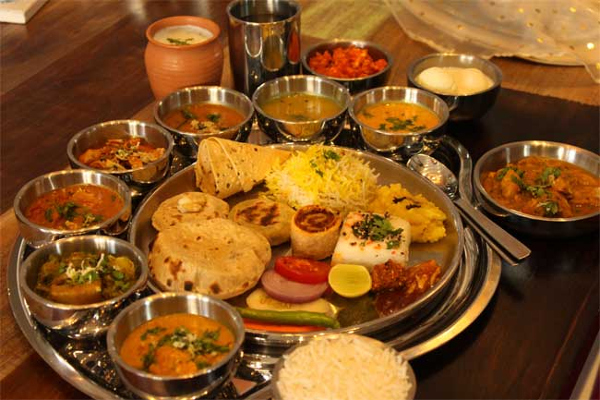There are several food-related traditions from ancient times in India, that may seem archaic, outdated, and even irrelevant to those who value only the modern and glitzy methods. But look closely and scratch beneath the surface… you will find a rich tapestry of scientific temper and relevance. Let us look at a few such traditions, especially pertaining to food.
Don’t eat after sunset: Until recently, when Intermittent fasting methods 16:8 or 12:12 caught up – the tradition of stopping the intake of meals or any foods post sunset was considered a religious fad by those who feel traditions are like chains. But now we know from IM and circadian rhythm information that the digestive tract needs rest. To eat mindfully, meaningfully, consciously is more important than just binge-eating from popcorn tubs or pizza takeaways while you also binge-watch something on the net or the telly. When our ancestors incorporated some health practices into daily life, they tried to give it socioreligious hues for better adherence. Religious practices and cultural customs related to eating habits have a significant impact on the lifestyle and health of the community. Not eating after sunset till the next morning after bath meant they did intermittent fasting with a 16-hour window without saying so. A scientific research paper published by the Department of Endocrinology, Diabetes and Bariatric Medicine, Narayana Health City, Bengaluru states that the acts of caloric restriction (CR) and intermittent fasting (IF) are done this way have shown to improve glucose homeostasis and insulin resistance in humans. These practices ensured the ancient Indians did not overeat and helped people treat food with the reverence it deserves. Also, in the olden days, there was no electricity. Eating at night was fraught with the dangers of insects falling into food. It helped to retire early and wake up at daybreak, to harness the body’s energy as per the circadian rhythm dictated by the all-important Sun.
Eat jaggery rolls with Neem leaves on New Year’s Day: This tradition is seen on Gudhi Padwa – the Hindu New Year’s Day – in Maharashtra. Azadirachta indica, commonly known as neem, has attracted worldwide prominence in recent years, owing to its wide range of medicinal properties. A study’s findings published by the Department of Biochemistry, Faculty of Science, Annamalai University show that Neem leaf and its constituents have been demonstrated to exhibit immunomodulatory, anti-inflammatory, antihyperglycaemic, antiulcer, antimalarial, antifungal, antibacterial, antiviral, antioxidant, antimutagenic and anticarcinogenic properties. There you go! Start a New Year’s Day by deworming and passing it off as a festival. Ensures compliance. Keeps the constituents of society healthy. Serving food on plantain (banana) leaves: A research paper published after a study carried out by the Amrita School of Ayurveda published in ScienceDirect.com shows that Banana leaves contain a lot of polyphenols, a characteristic cancer-preventing agent found in many plant-based foods. The banana leaf additionally imparts a smell to the sustenance and improves the taste. Eating on leaves is savvy, and cleaning the mess after eating is simple. Not to mention how eco-friendly, hygienic and economical it is, as an option. The research paper by the Amrita School of Ayurved also highlights how generally, water is sprinkled on banana leaves before use as a demonstration of cleansing. The use of banana leaves to serve food dates back to a period before the use of metals became the backbone of cutlery. Indians – the people of this subcontinent – brought up on a culture of thrift, social responsibility, and austerity – have always encouraged any endeavours towards zero-carbon footprint behaviour.
Meals on the floor: When a person squats on the floor, a significant number of muscles are used compared with when one sits on a chair or a seat, points out the research paper by the Amrita School of Ayurveda. When one’s feet are beneath the heart (as in a position when sitting on a seat), the blood flow is directed to the feet, whereas when one sits with folded legs on the floor, the heart gets the advantage of better dissemination. That ensures better digestion. Sitting on the floor strengthens the lumbar region of the body, and when the individual sits to eat in an appropriate position, digestion-related juices are secreted in the stomach, which gets ready for processing the food. The Vagus nerve that joins the brain and gut in the gut-brain axis works well and the stomach and cerebrum get time to relate the signs of feeling full. As a result, sitting on the floor and eating – one is able to eat the right amount and not overeat – has a huge weight reduction advantage.
Disclaimer: Tips and suggestions mentioned in the article are for general information purposes only and should not be construed as professional medical advice. Always consult your doctor or a dietician before starting any fitness programme or making any changes to your diet.
Source: TimesNow
You may also like
-
India Against Mpox
-
Combination of ‘Siddha’ Drugs Reduces Anemia in Adolescent Girls: Study
-
Suspected Mpox Case Under Investigation; Patient Put Under Isolation, No Cause for Alarm
-
Prime Minister Applauds India’s Best Ever Performance at the Paralympic Games
-
National Exit Test (NExT) for Ayush to be Effective from 2021-2022 Batch: Union Minister of Ayush Shri Prataprao Jadhav
